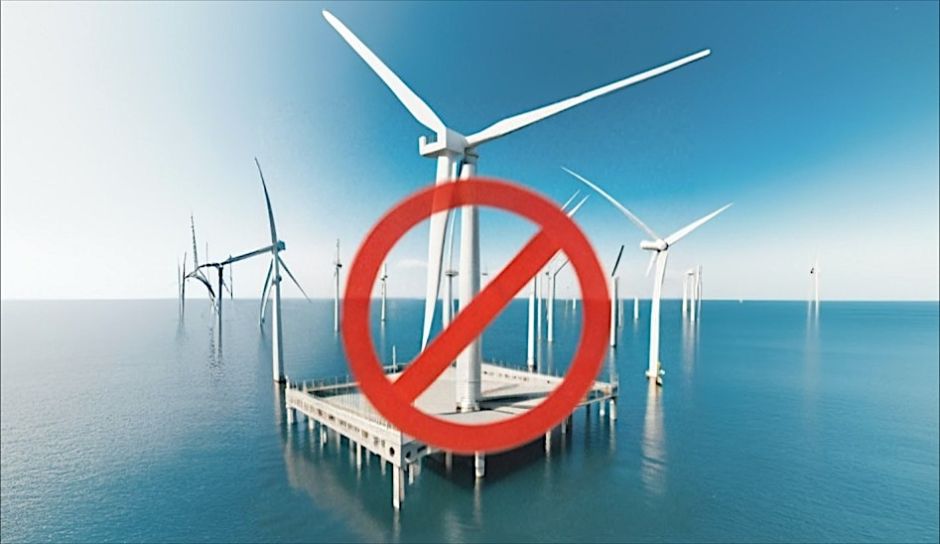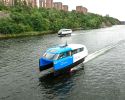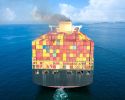Halted wind farms create unnecessary delays in the green transition

One of the 13 wind farms rejected by the Swedish government last week was to be built off the coast of Gotland. This decision has effectively made large-scale hydrogen production on the island impossible, complicating the implementation of hydrogen-powered shipping in the Baltic Sea.
“Our project will continue, but there’s a significant risk that investments intended for Swedish wind farms will be redirected to other countries,” says Björn Samuelsson, a researcher at Uppsala University.
The government’s decision to stop 13 planned offshore wind farms in the Baltic Sea was based on the Swedish Armed Forces’ assessment that such developments would hinder national defense. Defense Minister Pål Jonson explained that wind turbines could interfere with sensors and radar systems, making it harder to detect submarines and potential air attacks.
“Ballistic and cruise missiles are a major challenge when it comes to offshore wind farms,” Jonson said during a press conference alongside Climate and Environment Minister Romina Pourmokhtari and Energy and Business Minister Ebba Busch.
However, Björn Samuelsson, a researcher at the Department of Civil Engineering and Built Environment at Uppsala University, Campus Gotland, is unconvinced.
“Clearly, these challenges can be addressed in countries like the UK, Poland, and Denmark. According to the wind power industry and the Swedish Defence University, solutions exist. They may not be fully developed yet, but all indications suggest it’s possible to relocate radar systems to the wind farms. I feel there’s no genuine willingness from the government or the Armed Forces to resolve this.”
For the past three years, Samuelsson and his colleagues at Uppsala University have collaborated with Gotlandsbolaget on major projects aimed at making Gotland’s ferry traffic fossil-free by 2045, using hydrogen. The Aurora wind farm off Gotland is a crucial part of this concept, as large-scale hydrogen production requires substantial electricity.
“Getting electricity from the mainland would be very expensive. Ideally, we want hydrogen production as close to the energy source as possible. Transporting hydrogen is cheaper than transporting electricity,” says Samuelsson, adding that the government’s decision has cast a shadow over Sweden’s green transition.
“I do think this will eventually work itself out—it has to. But this decision has caused an unnecessary pause of several years, both for those developing transition plans and for those investing in them. There’s plenty of capital ready to invest in our transition, but who wants to invest in Swedish offshore wind farms in the Baltic after this? It’s likely that these funds will now go to countries like Finland, Poland, and Denmark.”
The Swedish business community, including Svenskt Näringsliv (Confederation of Swedish Enterprise), has voiced similar concerns, warning that the decision could harm Sweden’s competitiveness. Access to affordable and renewable energy is crucial for industries and companies investing in green technology and innovation.
Is there another solution?
“You can have your opinions about nuclear power, but the fact is that it won’t be operational until at least 2040. Anything earlier is wishful thinking. The realistic hope is for a cross-party agreement,” Samuelsson explains.
“It won’t help if we get a new government in two years that reverses this decision—investors will still view the situation as too uncertain. Conditions could change again in four years. That’s why we need long-term solutions for the energy system. It’s critical for the country, and the investments are too significant to treat the system as something that can be turned on and off.”
For Samuelsson, the work continues as usual. His hydrogen research isn’t specific to the Baltic Sea and can be applied wherever similar conditions exist for shipping.
“The government’s decision is certainly a setback, but we can’t let it defeat us. If we keep working and pushing for change, I believe this will eventually be resolved.”
-
 Ny studie: Eldrivna pendelbåtar kan effektivisera Stockholms kollektivtrafik
Ny studie: Eldrivna pendelbåtar kan effektivisera Stockholms kollektivtrafik -
 Sjöfartens utsläpp ökar
Sjöfartens utsläpp ökar -
 Sociala relationer påverkar val av bränsle
Sociala relationer påverkar val av bränsle -
 Sjöfartens omställning kräver ”mjukare” påtryckningar
Sjöfartens omställning kräver ”mjukare” påtryckningar -
 Hon hade avtalad tid med Kapten ynkrygg
Hon hade avtalad tid med Kapten ynkrygg -
 Lighthouse omvärldsanalys 2025 – osäkerhet och tullar präglar sjöfarten
Lighthouse omvärldsanalys 2025 – osäkerhet och tullar präglar sjöfarten -
 Se seminariet Shipping in the Marine Environment
Se seminariet Shipping in the Marine Environment -
 Vad betyder egentligen de 90 procenten?
Vad betyder egentligen de 90 procenten? -
 Hålla där...
Hålla där... -
 Ny rapport: Klimatförändringarna ett hot mot de flesta större hamnar i världen
Ny rapport: Klimatförändringarna ett hot mot de flesta större hamnar i världen

